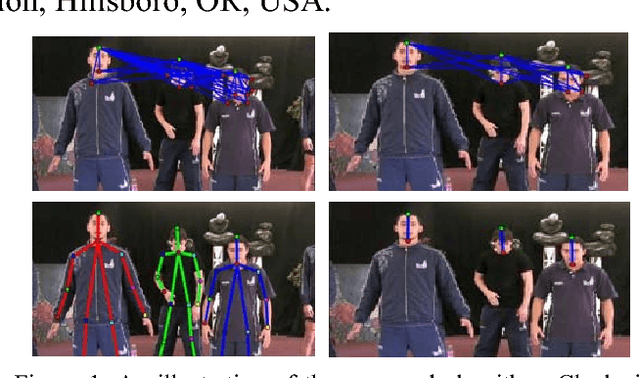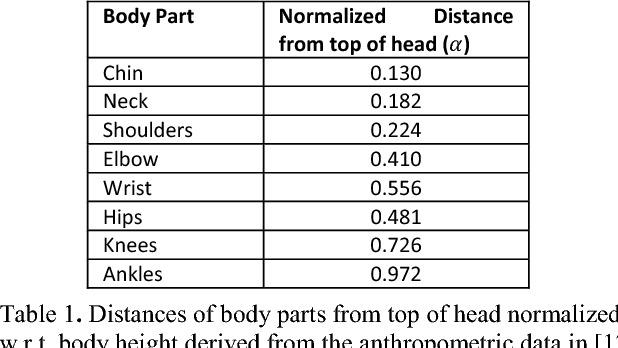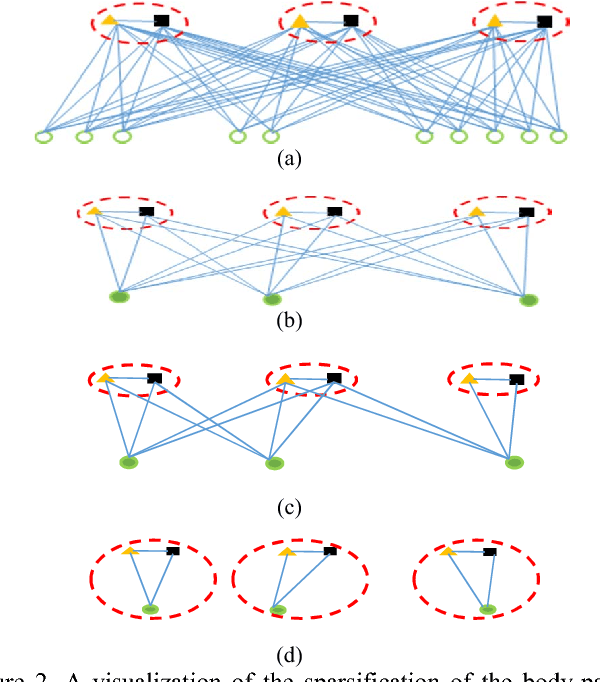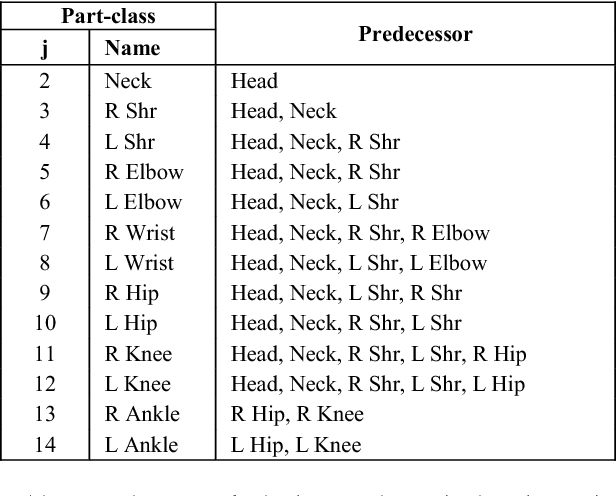Srenivas Varadarajan
A Greedy Part Assignment Algorithm for Real-time Multi-person 2D Pose Estimation
Aug 30, 2017



Abstract:Human pose-estimation in a multi-person image involves detection of various body parts and grouping them into individual person clusters. While the former task is challenging due to mutual occlusions, the combinatorial complexity of the latter task is very high. We propose a greedy part assignment algorithm that exploits the inherent structure of the human body to achieve a lower complexity, compared to any of the prior published works. This is accomplished by (i) reducing the number of part-candidates using the estimated number of people in the image, (ii) doing a greedy sequential assignment of part-classes, following the kinematic chain from head to ankle (iii) doing a greedy assignment of parts in each part-class set, to person-clusters (iv) limiting the candidate person clusters to the most proximal clusters using human anthropometric data and (v) using only a specific subset of pre-assigned parts for establishing pairwise structural constraints. We show that, these steps result in a sparse body parts relationship graph and reduces the complexity. We also propose methods for improving the accuracy of pose-estimation by (i) spawning person-clusters from any unassigned significant body part and (ii) suppressing hallucinated parts. On the MPII multi-person pose database, pose-estimation using the proposed method takes only 0.14 seconds per image. We show that, our proposed algorithm, by using a large spatial and structural context, achieves the state-of-the-art accuracy on both MPII and WAF multi-person pose datasets, demonstrating the robustness of our approach.
 Add to Chrome
Add to Chrome Add to Firefox
Add to Firefox Add to Edge
Add to Edge